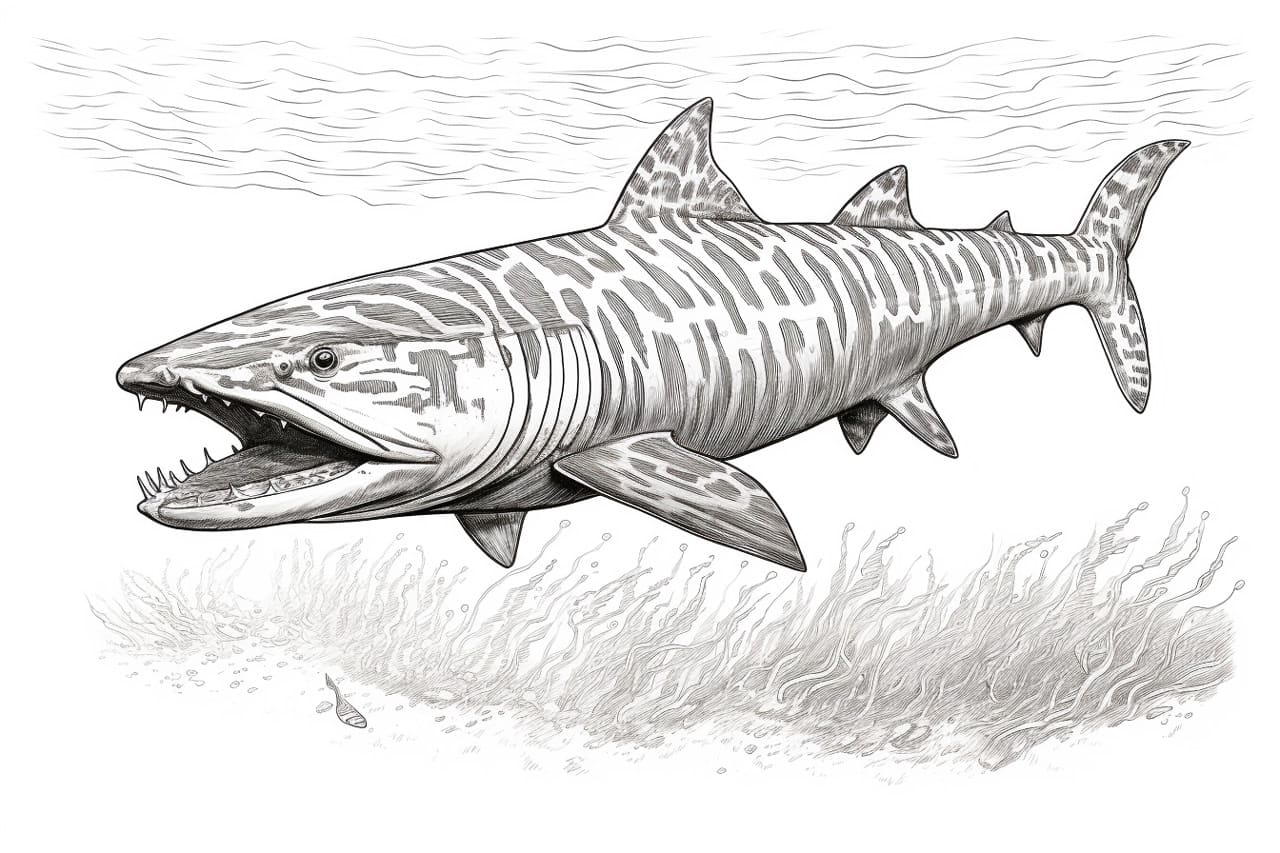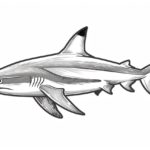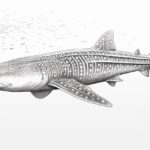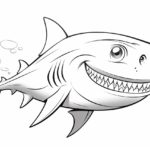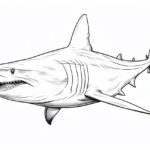Welcome to the fascinating world of art, where we can bring the beauty of nature to life through our drawings. Today, we will delve into the underwater realm and focus on drawing the majestic Zebra Shark. With its striking black and white stripes resembling a zebra, this unique creature captures the imagination of artists and nature enthusiasts alike. Join me as we explore the intricate patterns and graceful movements of the Zebra Shark, and learn how to capture its essence on paper. Let’s dive in and unleash our creativity as we embark on this artistic journey together.
Materials Required
To draw a Zebra Shark, you will need the following materials:
- Drawing paper or sketchbook
- Pencils (preferably a range of graphite pencils for different shades)
- Eraser
- Sharpener
- Reference image of a Zebra Shark
- Colored pencils or markers (optional, if you want to add color)
- Blending stump or tortillon (optional, for blending graphite):
How to Draw a Zebra Shark: a Step-by-step Guide
Step 1: Sketch the Outline
Start by lightly sketching the basic outline of the zebra shark’s body. Draw a long, slightly curved line for the body and add a triangular shape for the head. Include the fin shapes on the top and sides of the body as well.
Step 2: Add the Details
Next, draw in the details such as the distinctive stripes along the body of the zebra shark. These stripes should be irregular and jagged, resembling a zebra’s stripes. Add the eye, gill slits, and mouth with pointed teeth.
Step 3: Define the Fins
Draw the pectoral fins (the side fins) as large, triangular shapes with curved edges. The dorsal fin (top fin) should be tall and triangular, while the tail fin should be large and slightly forked.
Step 4: Refine the Features
Refine the details of the zebra shark by adding texture to the skin, such as small dots or scales. Add shading to give the shark a three-dimensional appearance, focusing on areas where shadows would naturally fall.
Step 5: Final Touches
Go over your drawing, darkening the lines and erasing any unnecessary guidelines. Add any additional details you may have missed, such as the small barbels near the mouth or the pattern on the underside of the shark.
Step 6: Optional Background
If desired, you can add a simple underwater background to enhance your drawing. Include some seaweed, rocks, or bubbles to place the zebra shark in its natural habitat.
Step 7: Evaluation and Adjustments
Take a step back and evaluate your drawing. Make any necessary adjustments to ensure the proportions and details are accurate. Pay attention to the overall balance and composition of the artwork.
Step 8: Finalize the Drawing
Once you are satisfied with your zebra shark drawing, go over the lines with a pen or darker pencil to make them stand out. Consider adding color using colored pencils, markers, or paints to bring your artwork to life.
Conclusion
I am incredibly impressed by your skill and creativity in capturing the beauty of the Zebra Shark in your drawing. Your attention to detail and use of shading truly brings the creature to life on the page. Keep honing your talents and exploring new subjects – your potential as an artist is limitless. Remember to continue practicing and experimenting with different techniques to further develop your unique style. I have no doubt that your passion and dedication will lead you to even greater artistic achievements in the future. Well done!
Fun Facts About Zebra Sharks
- Zebra Sharks, also known as Leopard Sharks, get their name from the unique striped pattern on their bodies when they are young. As they mature, the stripes fade and turn into spots, giving them a more leopard-like appearance.
- Zebra Sharks are typically docile and non-aggressive towards humans, making them popular among divers and snorkelers. They are known to be curious and may approach divers closely.
- These sharks are nocturnal feeders, spending their days resting on the ocean floor and becoming more active at night to hunt for prey such as small fish, crustaceans, and mollusks.
- Zebra Sharks have a unique way of feeding called suction feeding, where they use their strong jaws to create a vacuum to suck in their prey.
- Unlike most shark species, Zebra Sharks are known to exhibit a form of social behavior by forming small groups or aggregations during certain times of the year, such as mating season.
- Zebra Sharks are oviparous, meaning they lay eggs. The female will lay egg cases, also known as mermaid’s purses, which contain a single developing embryo. The eggs are anchored to the ocean floor until they hatch.
- These sharks can grow up to 8-9 feet in length and are considered to be a relatively large species of carpet shark.
- Zebra Sharks have been known to exhibit site fidelity, returning to the same reef or area year after year. This behavior makes them more vulnerable to threats such as habitat destruction and overfishing.
- Zebra Sharks are listed as vulnerable by the IUCN Red List due to threats such as habitat loss, pollution, and fishing pressure. Conservation efforts are in place to protect these beautiful sharks and their habitats.
- Zebra Sharks have a lifespan of around 25-30 years in the wild, and they play a vital role in maintaining the health of coral reef ecosystems by controlling populations of smaller marine
Suggestions for Scenes and Settings for Zebra Shark Drawings
- Zebra shark swimming gracefully through a colorful coral reef, surrounded by vibrant fish and sea plants.
- Zebra shark resting on the sandy ocean floor, with sunlight filtering through the water creating interesting patterns.
- Zebra shark gliding through a dark underwater cave, with rays of light illuminating its unique stripes.
- Zebra shark hunting for prey among a school of smaller fish, showcasing its predatory nature.
- Zebra shark interacting with other marine creatures such as sea turtles or stingrays, in a peaceful underwater scene.
- Zebra shark in a dynamic pose, leaping out of the water with droplets splashing around it.
- Zebra shark in a scientific illustration style, highlighting its distinct anatomy and features.
- Zebra shark in a surreal or fantasy setting, such as swimming through a dream-like underwater garden.
- Zebra shark in a detailed close-up, focusing on its intricate patterns and textures.
- Zebra shark in a conservation-themed drawing, surrounded by human-made debris to raise awareness about marine pollution.

